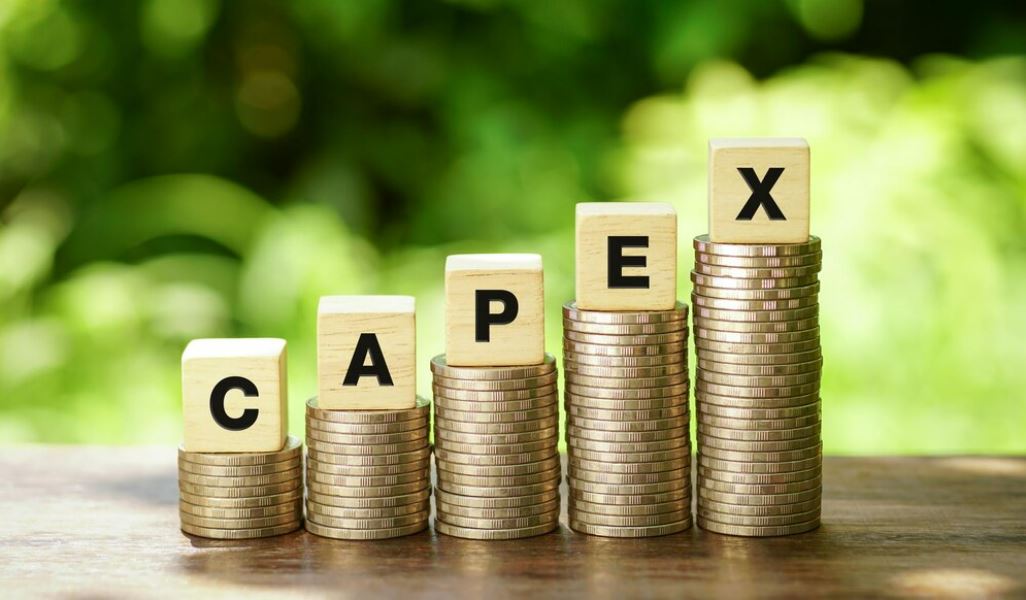What is CAPEX, and why is it important?: The ins and outs of capital expenditure

Capital expenditure, or CAPEX for short, is essential to any business. It is important for business owners to understand CAPEX and what it can reveal about your business. You may have a lot of questions about CAPEX. What is it? Why is it important? In this blog, we’ll answer all those questions by giving you an overview of CAPEX, including how to calculate it and how it can provide insights into your business.
What is CAPEX?
Capital expenditure (CAPEX) is the money a business spends on purchasing new assets, such as buildings, machinery, or equipment. Alternatively, it can include repairs or upgrades that extend an existing asset’s useful life. Capital expenditures aim to invest in the future of the business by expanding its capacity or improving its efficiency. It is essential to a business’s budget to ensure that the company has the resources it needs to grow and thrive.
Some common examples of CAPEX include:
- Tangible assets such as buildings and property, machinery and equipment, vehicles, computers and software, inventory and furniture
- Intangible assets, such as patents or copyrights
- Upgrading existing assets, such as repairing a roof or upgrading machinery
- Expanding operations by opening new branches or stores
- Upgrading existing facilities or equipment
- Repairing existing assets
- Adapting an asset for a new use
- Purchasing or starting a new business venture
Capital expenditure Vs Operational expenditure
Operational expenditure (OPEX) is the money spent on day-to-day activities, such as rent, salaries, and utilities. It is the expenditure necessary to keep the business running and is not used for long-term growth or investment. The main difference between CAPEX and OPEX is that CAPEX purchases or upgrades assets that have economic benefits beyond the current accounting period. In contrast, OPEX is used for short-term expenses, recognised as an expense on the income statement rather than an asset on the balance sheet.
Why is CAPEX important?
CAPEX is significant because it allows businesses to invest in their future growth. Businesses can expand their operations and production capacity by investing in new assets, leading to higher sales and profits. CAPEX is a key part of any business’s budget and is closely watched by investors and analysts.
How do you calculate CAPEX?
Beginning CAPEX + (additions during period) – (disposals during period) = Ending CAPEX.
Steps to calculate CAPEX :
- Determine the value of all assets at the beginning of the period, including both tangible and intangible assets
- Add any purchases of new assets during the period
- Subtract any sales or disposals of assets during the period
- Determine the value of all assets at the end of the period
Capex Example
Let’s take a basic example. Assume a company has the following assets at the beginning of the year:
Land: $100,000 + Building: $500,000 + Equipment: $200,000 = Total assets: $800,000
During the year, the company buys a new piece of equipment for $50,000 and sells an old piece of equipment for $25,000. The company’s CAPEX for the year would be:
$800,000 + $50,000 – $25,000 = $825,000.
This means the company invested $825,000 in new assets during the year.
What Does CAPEX Tell You About Your Business?
CAPEX can give you insights into a company’s growth prospects. If a company invests heavily in new assets, it suggests that it is confident about its future growth. CAPEX can also be a good indicator of a company’s profitability. A company generating a lot of cash flow can afford to invest in new assets, while a company struggling to generate cash flow may be forced to cut back on CAPEX. CAPEX can be used in several business metrics to assess a company’s financial health and performance.
Capital Expenditure to Revenue Ratio
CAPEX / Revenue x 100.
For example, if a company has a CAPEX of $100 million and revenue of $500 million, its CAPEX to revenue ratio would be 20%. This means that for every $100 in revenue, the company is spending $20 on capital expenditures.
A high CAPEX to revenue ratio may indicate a company that is growing quickly and investing heavily in its future. A low ratio may indicate a company that is not growing as quickly or is not investing as much in its future growth.
Capital Expenditure to Depreciation Ratio
CAPEX / Depreciation x 100
For example, if a company has a CAPEX of $100 million and depreciation of $50 million, its CAPEX to depreciation ratio would be 200%. This means the company is spending $200 on capital expenditures for every $100 in depreciation.
A high CAPEX to depreciation ratio may indicate a company is investing heavily in its future growth.
Capital Expenditure to Operating Cash Flow Ratio
CAPEX / Operating Cash Flow x 100
For example, if a company has a CAPEX of $100 million and an operating cash flow of $200 million, its CAPEX to operating cash flow ratio would be 50%. The company is spending $50 on capital expenditures for every $100 in operating cash flow.
A high CAPEX to operating cash flow ratio may be indicative of a company that is investing heavily in its future growth.
Return on Invested Capital
ROIC = (Net Income – Dividends) / (Capital Expenditures + Working Capital) x 100
For example, if a company has a net income of $100 million, dividends of $50 million, capital expenditures of $200 million, and working capital of $300 million, its return on invested capital would be 25%. This means that for every dollar the company spends on capital expenditures and working capital, it generates $0.25 in net income.
A high return on invested capital indicates a company efficiently using its resources to generate profits.
As you can see, CAPEX is an important metric for businesses because it can give you insights into a company’s growth, efficiency, and profitability. This can be valuable information for business owners or managers in assessing a company’s health and performance.
Are you ready
to get your time
back?
Yes! Accario will help you
focus on your business
More smarts, more efficiencies,
with more benefits.







